Don't wanna be here? Send us removal request.
Text
The differences between intersex and hermaphrodite should be mandatory learning in highschool bio, because the basics aren’t that complicated to grasp and they shouldn’t be considered scary.
@biologyweeps do you wanna take a crack at this?
46 notes
·
View notes
Photo
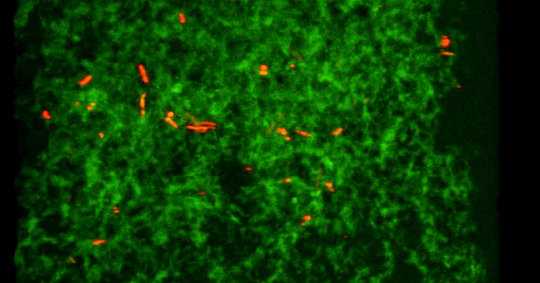
Could Alzheimer’s Stem From Infections? It Makes Sense, Experts Say - The New York Times
Could it be that Alzheimer’s disease stems from the toxic remnants of the brain’s attempt to fight off infection?
Provocative new research by a team of investigators at Harvard leads to this startling hypothesis, which could explain the origins of plaque, the mysterious hard little balls that pockmark the brains of people with Alzheimer’s.
[...]
The Harvard researchers report a scenario seemingly out of science fiction. A virus, fungus or bacterium gets into the brain, passing through a membrane — the blood-brain barrier — that becomes leaky as people age. The brain’s defense system rushes in to stop the invader by making a sticky cage out of proteins, called beta amyloid. The microbe, like a fly in a spider web, becomes trapped in the cage and dies. What is left behind is the cage — a plaque that is the hallmark of Alzheimer’s.
0 notes
Note
Doc, e di questo virus Zika che sappiamo? Dobbiamo preoccuparci?
Colgo l’ask per proporre i dati che avevo raccolto per @3nding, con cui ne parlavo proprio l’altro giorno.
In un post precedente avevo minimizzato il rischio per l’Italia ma perché mi mancavano dei dati che solo adesso sono riuscito a trovare, sebbene ancora parziali.
Il problema dello Zikavirus, che dà una patologia molto simile alla Dengue, non sta nella pericolosità dell’infezione stessa(febbre, artralgia, spossatezza), per la quale non c’è terapia o vaccino ma che si risolve spontaneamente spesso senza essere sintomatica, ma nel fatto che sembra essere correlata ai numerosi casi di malformazioni fetali (microcefalia) in donne brasiliane punte e infettate dalla zanzara Aedes (la zanzara tigre), vettore primario dell’infezione.
Appurato questo, faccio però fatica a trovare dati precisi che mostrino in maniera univoca quali rischi ci siano che l’epidemia possa propagarsi anche in un paese come l’Italia.
A mio avviso tutto dipende:
A che stadio dell’infezione umana la zanzara che punge un malato possa essa stessa diventare vettore (esempio: soggetto già infetto che torna da un viaggio e si fa pungere dalle zanzare tigre ‘nostrane’).
Quanto impiega la zanzara tigre nostrana a sviluppare l’infezione una volta entrata in contatto col sangue infetto (ho trovato riferimenti a climi americani in questa stagione, 12-15 giorni, ma niente di più).
Se la zanzara possa trasmettere il virus alle proprie uova (e qua sarebbero cazzi).
Se mi volete dare una mano basta cercare zika+pubmed e non avrete che l’imbarazzo della scelta.
P.S.La presunta trasmissione sessuale da parte del maschio fa paura ma, sempre a mio avviso, è marginale ai fini del rischio epidemia (tutti i casi erano di persone che hanno avuto rapporti sessuali quando avevano già mostrato ematuria e prostatite).
Grazie.
95 notes
·
View notes
Text
#the next person to go 'sex isn't real' will be beaten with the biggest ovum available on this planet rn:#the goddamn ostrich egg
I have a penis (for now) but my sex is not male.
Listen up feminists and LGBT activists! Yes, you who worship the holy trinity of “sex, gender, and sexuality” in your educational literature! Yes, you who suddenly discovered transgender folks sometime during the 1990s and decided that, for their sake, it would be super important to draw a clear distinction between “sex” as a biological, bodily fact and “gender” as a mode of social identification! You’re doing it wrong. Sex is not “what’s in your pants.” Sex is not chromosomes. Sex is not hormones. Sex is not biology. Sex is neither a penis nor a vagina. Sex is not breasts, nor is it chest hair, prostates or ovaries. I’m a transgender woman. For the next few months at least, what’s in my pants is a penis. I have a prostate gland. I have a Y chromosome. “Aha!” you say. “So your sex is male but your gender is female! That’s what makes you transgender.” Wrong. Try again! “Sex” is a social decision made at the moment of birth (or earlier if your parent[s] get a sonogram). We only assign children a “sex” because of gender, because we feel the cultural imperative to sort people into two dichotomous populations based on the presence or absence of a tiny bit of flesh. “Sex” is gender in doctor’s clothing: nothing more, nothing less. Yes, we have bodies. Yes, those bodies have characteristics. Yes, those characteristics have gendered meanings in a cisnormative world. But this “sex” you keep on looking for, that you incorporate into your ostensibly trans-inclusive curriculum? It. Doesn’t. Fucking. Exist. The only people who need to know details about my body parts are my doctors and my lovers. Do you fall into one of those two groups? No? Then you don’t need to know what’s in my pants! You don’t need to know what my chromosomes are. You don’t need to know my estrogen levels (although they’re quite high, thank you very much).
All you need to know is that my name is Samantha, I use she/her pronouns and I pee behind the door with the dress on it. Guess what? We can teach people all of those things without them knowing anything about my body.
In fact, you should just quit talking about “sex” altogether. Try using “assigned sex” to talk about doctors’ decisions and the ways in which those decisions affect peoples’ lives. But quit trying to act as if we can empirically sort bodies into two categories that pre-exist gender norms. We can’t. And you’re hurting precisely the people that you think you’re helping with your convenient sex/gender split.
19K notes
·
View notes
Photo
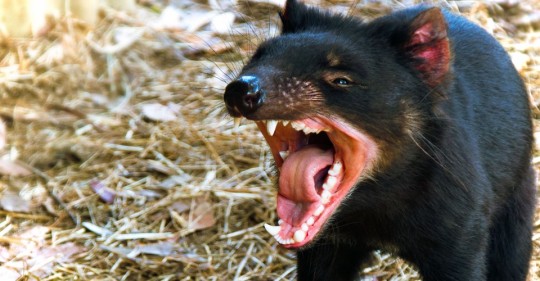
Twenty years ago, scientists identified a bizarre new disease afflicting Australia’s Tasmanian devils. These black, rambunctious, corgi-sized predators started turning up with grotesque facial tumors that proved invariably fatal. The disease, aptly named devil facial tumor disease (DFTD), quickly spread through the devils’ island home of Tasmania, slashing their numbers by up to 90 percent in some regions, and consigning them to the endangered-species list in 2008.
After a decade, scientists realized that all cases of DFTD are genetically identical. The tumors were all clones of each other, and distinct from the devils that harbor them. The conclusion was clear and astonishing—DFTD is a contagious cancer, and the devils were catching it from each other.
The Curious Case of a Contagious Cancer - The Atlantic
1 note
·
View note
Photo

Where in the World Is Climate Change Denial Most Prevalent? - NYTimes.com
In a report published in 2014 by Ipsos Mori, a market research group in the United Kingdom, 16,000 people in 20 countries were asked questions in an online survey about several topics, including climate change. In addition to the United States, respondents came from Britain, Russia, China, India, Brazil, South Africa, Japan, and elsewhere.
According to the report, the United States had more climate change deniers among their respondents than any other country. Britain and Australia each also had a large percentage of respondents who said they did not agree with the notion of human-caused climate change.
In contrast, China, Argentina, Italy, Spain, Turkey, France and India each had more than 80 percent of their respondents say they agreed with the idea of human-caused climate change.
0 notes
Note
Prove to me that gender is not a social construct, the same way that gravity and evolution are not social constructs. Show me the literature that actually addresses 'gender' as a real, measurable, innate part of human physiology/psychology.
you know that measuring psychology is a real fucking mess, right? I mean I’m sure @your-psychology-is-wrong or @socialscienceweeps could tell you a ton about how psychology is a really really soft science to begin with.
But you know what, let’s go.
Here we have stuff on phantom penises. Both in so far that in MtF transsexuals post-operative ones are a *significantly* rarer than in cis man who underwent amputation. Post-operational phantoms limbs are widely thought to be an expression of how your brain’s body map is not dealing with the loss of limb where a limb should be.
Then here we got brain structural differences (or similarities) between trans people and their cis counterparts. And another. And more. Behold brain stuff for nonbinary people (uses ‘brain sex’ in pace of gender because ‘gender’ to a lot of people means ‘gender roles’ and that’s kinda unfortunate). And more brain stuff. And that’s just scratching the surface.
But you know what, we got another kind of avenue here that’s not brain scans of various detailing.
And that avenue is ‘medical malpractice fuckups’. You know, the David Reimer case that got real famous? No? Well, let me explain.
David Reimer was born male and was scheduled to have a surgical intervention on his penis at the tender age of not quite a year old. The surgery failed badly and his penis was burnt beyond repair and had to be removed. The parents were worried what to do now, and the psychologist they conferred with told them to get sex reassignment surgery and raise David as a girl. The surgery was done at 22 months, meaning *way* before any kind of personality formation takes places. David was unhappy with this at the very least since he was 11 and reportedly never felt female (despite his parents best attempts to raise him as such) and returned to a male gender identity when he was 15, after he had been told the truth by his parents about a year prior. He went through the whole deal as trans men can do, hormones, phalloplasty, mastectomies.
Because from all appearances, you can’t take an infant, alter their genitals and go ‘you’re X now’ and expect happy adults. It doesn’t work that way. At ages that tender we can virtually rule out nurture as a factor. If it was, then the decade of being told ‘you’re a girl’ should have worked on David Reimer. It absolutely didn’t. He later committed suicide at only 38 years of age.
And before you bring the ‘hah he wasn’t happy as a dude!!’ argument, his identical twin brother had died of antidepressant overdose 2 years prior, and we know that depression has genetic factors, plus the general awfulness he was experiencing, set this off and it was unrelated to any of ‘not really a dude’ reasoning you may claim.
The case however proved to be incredibly important for the medical community because when reporting finally got out (the original psychologist was claiming that his ‘reprogramming’ had been a success when it was absolutely not) it made a big damn dent into the notion that nurture could change absolutely everything about human brains.
We’re not far enough into both imagining techniques and knowing how brains work en detail to be absolutely sure, but cases such as David Reimer, in combination with anatomical differences in the brain sure fucking point to this not being a social construct issue.
And you know what, while we’re on it, even if it *was* a social construct that’s not the end of the discussion. Like, language is a social construct but that doesn’t mean that language isn’t real or important. Virtually every human being that has the cerebral capacity to formulate thought uses languages one way or the other. If that language is spoken, whistled, signed, written or whatever else is irrelevant. It’s not about the method, it’s about the human need to converse in some fashion with our environment. So yeah, language is a social construct, but the need for it is something we’re born with. Gender roles are a social construct, but the whole thing of ‘my body ought to have/not have these sexed parts’ is something that happens to humans from birth.
148 notes
·
View notes
Note
buongiorno, spiega perfavore meglio la cosa che ha detto un paio di giorni fa delle tisane che induco la diuresi e quindi la disidratazione? immagino non valga ad esempio per tutti gli infusi, no?
chi più chi meno tutti.
Semplificando al massimo e escludendo qualsiasi altro intervento di qualsiasi altra natura, tu fai la pipì in due modi: obbligatoriamente un po’ di acqua viene persa nel “lavaggio renale” del sangue, e questo è quando viene scura; oppure hai troppa acqua nell’organismo e devi smaltirla, quindi nel “lavaggio renale” del sangue espelli più acqua, e questo è quando invece viene chiara. I due modi sono regolati da un ormone chiamato vasopressina o ormone antidiuretico (ADH): se produci questo ormone trattieni più acqua, se non lo produci ne rilasci di più. Nel caso di pipì scure l’ADH è prodotto, nel caso di pipì chiare l’ADH non lo è.
Se fa caldo produci più ADH (risparmi acqua), se fai sport pure, se bevi molto ne produci di meno. Le tisane hanno l’effetto di limitare l’azione dell’ADH, quindi se bevi molto caffè (tè o altro) farai molta più pipì, perdendo più liquidi di quanti dovresti.
4 notes
·
View notes
Photo
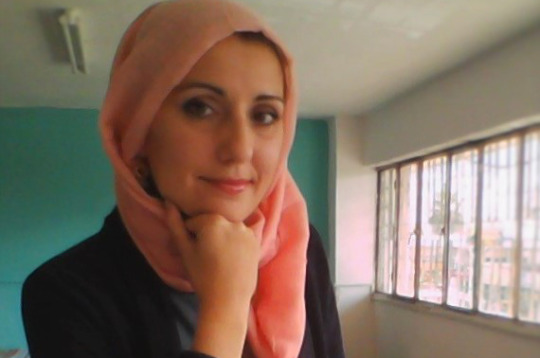
Sono italiana. Sono musulmana. Mi occupo di diritti delle donne e integrazione. Mio marito, anche lui ricercatore, anche lui musulmano, ma arabo, di difesa dei civili e i diritti umani.
La nostra vita si divide fra il Belgio, l’Italia e la Palestina: consideriamo ognuno di questi posti come casa nostra.
Conosco bene Molenbeek. Ho lavorato in questo quartiere di Bruxelles per due anni. Ho ottenuto il mio master con una ricerca su questo luogo. Quando sono in Belgio, è qui che vengo a fare la spesa al mercato del giovedì. Da qui venivano tre degli attentatori di Parigi. Da qui proveniva parte delle armi usate per l’attentato a Charlie Hebdo. Da qui sono partiti molti europei diretti in Siria.
Girando per queste strade, conoscendone la comunità, è possibile capire almeno in parte i motivi per cui il "reclutamento" qui funziona e come sia possibile instradare ragazzi a idee assurde, lontane anni luce dai contenuti del Corano.
"Io, italiana, musulmana e moderata. Vi spiego dove attecchisce l'estremismo"
0 notes
Link
(ANSA) - BOLOGNA, 20 NOV - Musulmani che hanno salvato ebrei dalla Shoah. Capitò nell'Albania degli anni ‘40 del Novecento, quando, nella colonia italiana invasa dai nazisti, arrivarono le brutalità dell'Olocausto. Ma il popolo albanese si rifiutò di consegnare agli occupanti gli elenchi con i nomi delle donne e degli uomini di religione ebraica. Lo fecero in nome del “Besa”, il codice d'onore, e cioè la parola data, la promessa fatta nel 1941 agli ebrei albanesi, circa 200, e a quelli che in Albania avevano trovato rifugio scappando dall'Europa vittima della follia nazista, di non tradirli mai, di non consegnarli mai agli aguzzini nazisti. Quella raccontata attraverso l'obiettivo del fotografo Norma Ghershman, nei pannelli di “Besa. Un codice d'onore. Albanesi e musulmani che salvarono ebrei ai tempi della Shoah”, è una storia poco nota al grande pubblico, ma il cui valore, anche alla luce della difficile situazione internazionale, è di grande importanza. La mostra, realizzata dall'Istituto storico della Resistenza di Reggio Emilia e dello Yad Vashem di Gerusalemme, si potrà vedere a partire da martedì 24 novembre, e fino al 28 dicembre, nei locali dell'Assemblea legislativa regionale dell'Emilia-Romagna (viale Aldo Moro 50, Bologna), dove è stata allestita. Il taglio del nastro è previsto per le ore 13 del 24 novembre con la partecipazione della presidente dell'Assemblea legislativa regionale, Simonetta Saliera, del consigliere segretario dell'Ufficio di Presidenza dell'Assemblea legislativa, Yuri Torri, della presidente dell'Istoreco di Reggio Emilia, Simonetta Gilioli, e dei rappresentanti delle principali associazioni culturali e religiose di Bologna. "Ospitare e promuovere questa mostra è per l'Assemblea un grande onore: Istoreco e Yad Vashem sono due importanti realtà con cui l'Assemblea legislativa collabora da tempo - sottolinea Saliera -. La mostra ‘Besa’ è un'occasione per riaccendere i riflettori su una pagina di storia quasi inedita: l'impegno dei cittadini albanesi di fede musulmana nel salvare uomini e donne di fede ebraica durante l'Olocausto. È una pagina di storia che assume un valore rilevante soprattutto in questo inizio di nuovo millennio. Lungi dall'essere risolte, le contrapposizioni in Medio Oriente hanno assunto una gravità nuova, ancora più allarmanti e drammatiche: non si tratta più di scontri tra Stati nazionali, né di avamposti della Guerra Fredda o di rivendicazioni territoriali e statuali di un popolo, sono divenute un duro e sanguinoso conflitto fra le parti più fondamentaliste delle religioni monoteiste". Per la presidente dell'Assemblea legislativa, quindi, “le immagini di Besa diventano un momento non solo di esercizio della memoria, ma di sguardo al futuro: alla possibilità di far cadere, in nome della comune appartenenza al genere umano, muri che oggi sembrano impossibili da scalfire”. (ANSA).
12 notes
·
View notes
Photo

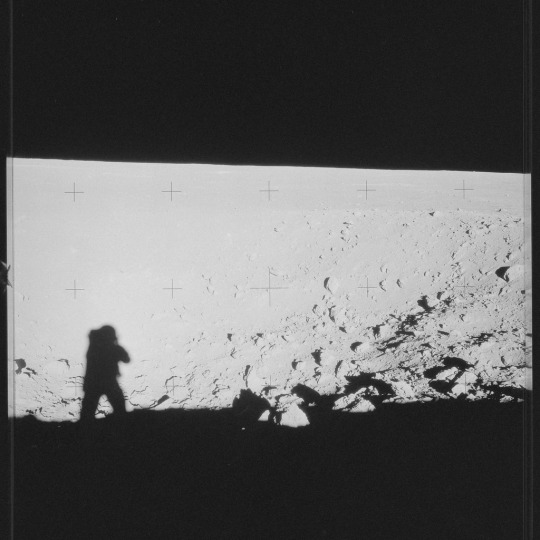
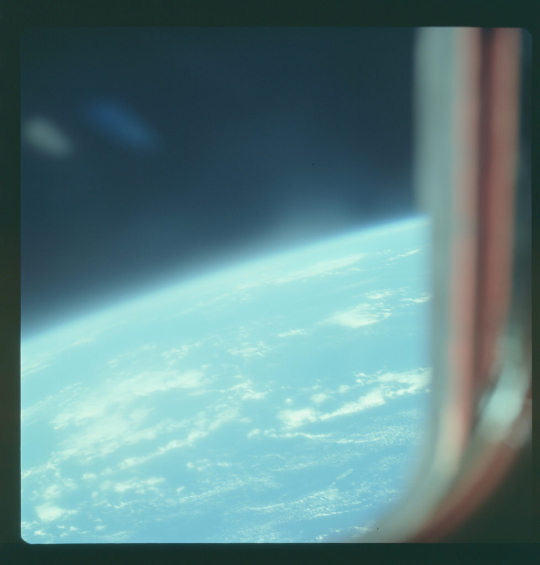
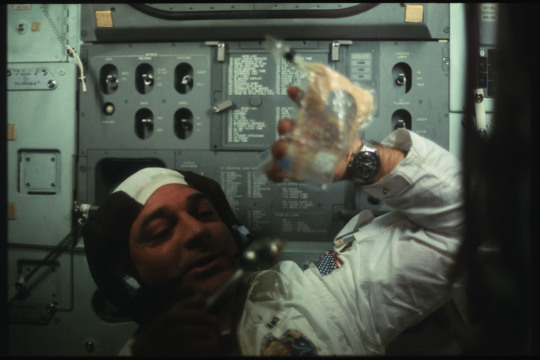
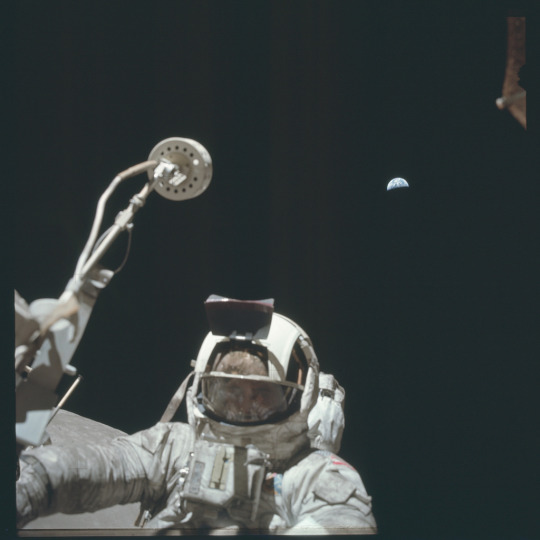

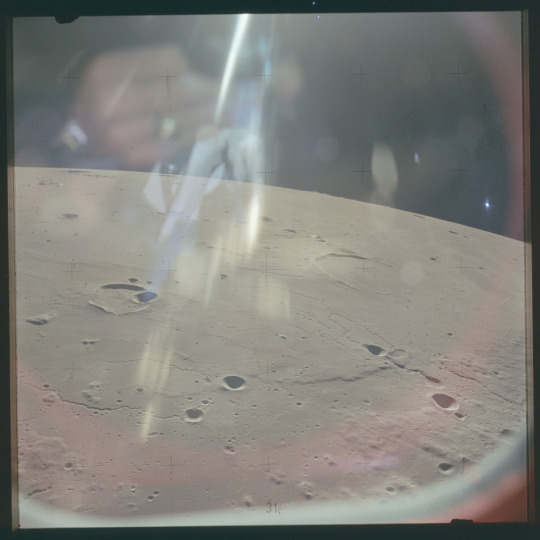
Every Photo From NASA’s Apollo Missions Are Now on Flickr
The Project Apollo Archive uploaded more than 10,000 high-resolution images the astronauts took during NASA’s Apollo Missions of the 1960s and 70s. The collection includes every never-seen-before photo shot with the Hasselblad cameras on the lunar surface, from Earth and lunar orbit, as well as during the journey between the two. All the photos are unprocessed versions of the original scans.
90K notes
·
View notes
Text
15 Ways the International Space Station is Benefiting Earth
With astronauts living and working aboard the International Space Station, we’re learning a great deal about creating and testing critical systems, maintaining efficient communications and protecting the human body during a deep space mission. While these are critical to our journey to Mars, it is important to also note all the ways in which research conducted and technology tested aboard the orbiting laboratory help us here on Earth.
Here are 15 ways the space station is benefiting life on Earth:
1. Commercializing Low-Earth Orbit

An exciting new commercial pathway is revolutionizing and opening access to space, fostering America’s new space economy in low-Earth orbit. For the first time, the market is expressing what research can and should be done aboard the microgravity laboratory without direct government funding. Our move to purchase commercial cargo resupply and crew transportation to the space station enables U.S. businesses to develop a competitive capability they also can sell as a service to others while freeing our resources for deep space exploration. Private sector participation provides a new model for moving forward in partnership with the government.
2. Supporting Water Purification Efforts Worldwide
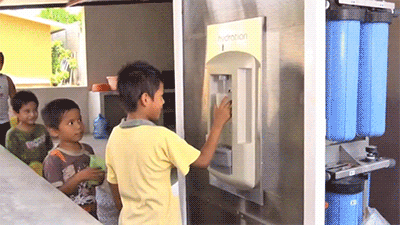
Whether in the confines of the International Space Station or a tiny hut village in sub-Saharan Africa, drinkable water is vital for human survival. Unfortunately, many people around the world lack access to clean water. Using technology developed for the space station, at-risk areas can gain access to advanced water filtration and purification systems, making a life-saving difference in these communities. The Water Security Corporation, in collaboration with other organizations, has deployed systems using NASA water-processing technology around the world.
3. Growing High-Quality Protein Crystals

There are more than 100,000 proteins in the human body and as many as 10 billion in nature. Every structure is different, and each protein holds important information related to our health and to the global environment. The perfect environment in which to study these structures is space. Microgravity allows for optimal growth of the unique and complicated crystal structures of proteins leading to the development of medical treatments. An example of a protein that was successfully crystallized in space is hematopoietic prostaglandin D synthase (H-PGDS), which may hold the key to developing useful drugs for treating muscular dystrophy. This particular experiment is an example of how understanding a protein’s structure can lead to better drug designs. Further research is ongoing.
4. Bringing Space Station Ultrasound to the Ends of the Earth
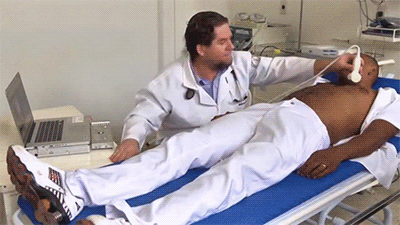
Fast, efficient and readily available medical attention is key to survival in a health emergency. For those without medical facilities within easy reach, it can mean the difference between life and death. For astronauts in orbit about 250 miles above Earth aboard the International Space Station, that problem was addressed through the Advanced Diagnostic Ultrasound in Microgravity (ADUM) investigation. Medical care has become more accessible in remote regions by use of small ultrasound units, tele-medicine, and remote guidance techniques, just like those used for people living aboard the space station.
5. Improving Eye Surgery with Space Hardware
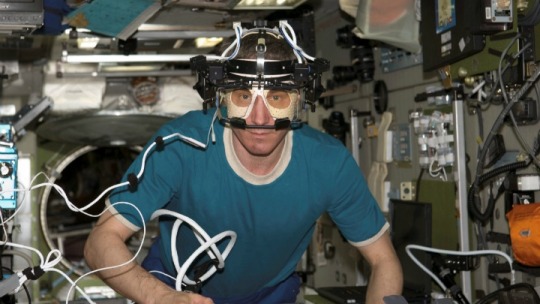
Laser surgery to correct eyesight is a common practice, and technology developed for use in space is now commonly used on Earth to track a patient’s eye and precisely direct the laser scalpel. The Eye Tracking Device experiment gave researchers insight into how humans’ frames of reference, balance and the overall control of eye movement are affected by weightlessness. In parallel with its use on the space station, the engineers realized the device had potential for applications on Earth. Tracking the eye’s position without interfering with the surgeon’s work is essential in laser surgery. The space technology proved ideal, and the Eye Tracking Device equipment is now being used in a large proportion of corrective laser surgeries throughout the world.
6. Making Inoperable Tumors Operable with a Robotic Arm

The delicate touch that successfully removed an egg-shaped tumor from Paige Nickason’s brain got a helping hand from a world-renowned arm—a robotic arm, that is. The technology that went into developing neuroArm, the world’s first robot capable of performing surgery inside magnetic resonance machines, was born of the Canadarm (developed in collaboration with engineers at MacDonald, Dettwiler, and Associates, Ltd. [MDA] for the U.S. Space Shuttle Program) as well as Canadarm2 and Dextre, the Canadian Space Agency’s family of space robots performing the heavy lifting and maintenance aboard the International Space Station. Since Nickason’s surgery in 2008, neuroArm has been used in initial clinical experience with 35 patients who were otherwise inoperable.
7. Preventing Bone Loss Through Diet and Exercise
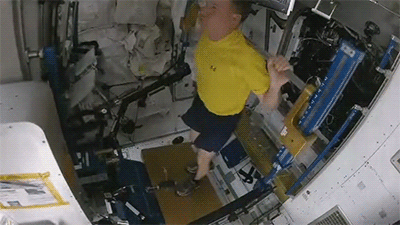
In the early days of the space station, astronauts were losing about one-and-a-half percent of their total bone mass density per month. Researchers discovered an opportunity to identify the mechanisms that control bones at a cellular level. These scientists discovered that high-intensity resistive exercise, dietary supplementation for vitamin D and specific caloric intake can remedy loss of bone mass in space. The research also is applicable to vulnerable populations on Earth, like older adults, and is important for continuous crew member residency aboard the space station and for deep space exploration to an asteroid placed in lunar orbit and on the journey to Mars.
8. Understanding the Mechanisms of Osteoporosis
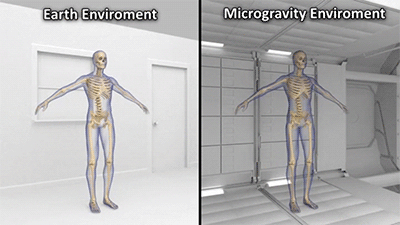
While most people will never experience life in space, the benefits of studying bone and muscle loss aboard the station has the potential to touch lives here on the ground. Model organisms are non-human species with characteristics that allow them easily to be reproduced and studied in a laboratory. Scientists conducted a study of mice in orbit to understand mechanisms of osteoporosis. This research led to availability of a pharmaceutical on Earth called Prolia® to treat people with osteoporosis, a direct benefit of pharmaceutical companies using the spaceflight opportunity available via the national lab to improve health on Earth.
9. Developing Improved Vaccines
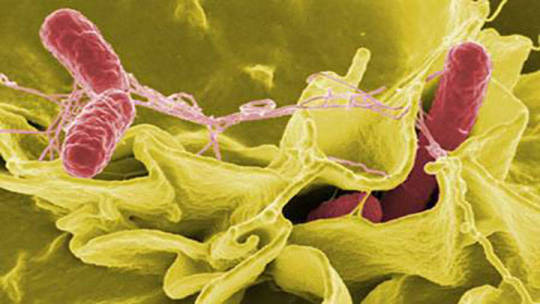
Ground research indicated that certain bacteria, in particular Salmonella, might become more pathogenic (more able to cause disease) during spaceflight. Salmonella infections result in thousands of hospitalizations and hundreds of deaths annually in the United States. While studying them in space, scientists found a pathway for bacterial pathogens to become virulent. Researchers identified the genetic pathway activating in Salmonella bacteria, allowing the increased likelihood to spread in microgravity. This research on the space station led to new studies of microbial vaccine development.
10. Providing Students Opportunities to Conduct Their Own Science in Space
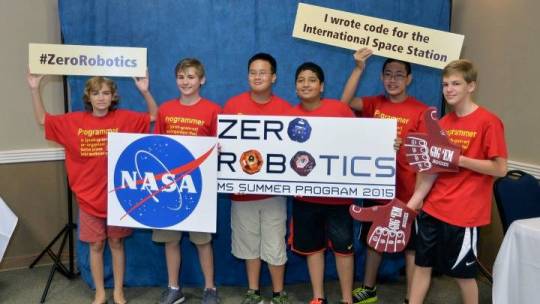
From the YouTube Space Lab competition, the Student Spaceflight Experiments Program, and SPHERES Zero Robotics, space station educational activities inspire more than 43 million students across the globe. These tyFrom the YouTube Space Lab competition, the Student Spaceflight Experiments Program, and SPHERES Zero Robotics, space station educational activities inspire more than 43 million students across the globe. These types of inquiry-based projects allow students to be involved in human space exploration with the goal of stimulating their studies of science, technology, engineering and mathematics. It is understood that when students test a hypothesis on their own or compare work in a lab to what’s going on aboard the space station, they are more motivated towards math and science.
11. Breast Cancer Detection and Treatment Technology

A surgical instrument inspired by the Canadian Space Agency’s heavy-lifting and maneuvering robotic arms on the space station is in clinical trials for use in patients with breast cancer. The Image-Guided Autonomous Robot (IGAR) works inside an MRI machine to help accurately identify the size and location of a tumor. Using IGAR, surgeons also will be able to perform highly dexterous, precise movements during biopsies.
12. Monitoring Water Quality from Space
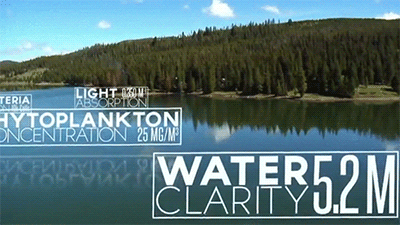
Though it completed its mission in 2015, the Hyperspectral Imager for the Coastal Ocean (HICO) was an imaging sensor that helped detect water quality parameters such as water clarity, phytoplankton concentrations, light absorption and the distribution of cyanobacteria. HICO was first designed and built by the U.S. Naval Research Laboratory for the Office of Naval Research to assess water quality in the coastal ocean. Researchers at the U.S. Environmental Protection Agency (EPA) took the data from HICO and developed a smartphone application to help determine hazardous concentrations of contaminants in water. With the space station’s regular addition of new instruments to provide a continuous platform for Earth observation, researchers will continue to build proactive environmental protection applications that benefit all life on Earth.
13. Monitoring Natural Disasters from Space
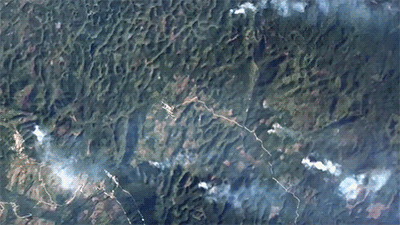
An imaging system aboard the station, ISS SERVIR Environmental Research and Visualization System (ISERV), captured photographs of Earth from space for use in developing countries affected by natural disasters. A broader joint endeavor by NASA and the U.S. Agency for International Development, known as SERVIR, works with developing nations around the world to use satellites for environmental decision-making. Images from orbit can help with rapid response efforts to floods, fires, volcanic eruptions, deforestation, harmful algal blooms and other types of natural events. Since the station passes over more than 90 percent of the Earth’s populated areas every 24 hours, the ISERV system was available to provide imagery to developing nations quickly, collecting up to 1,000 images per day. Though ISERV successfully completed its mission, the space station continues to prove to be a valuable platform for Earth observation during times of disaster.
14. Describing the Behavior of Fluids to Improve Medical Devices

Capillary Flow Experiments (CFE) aboard the space station study the movement of a liquid along surfaces, similar to the way fluid wicks along a paper towel. These investigations produce space-based models that describe fluid behavior in microgravity, which has led to a new medical testing device on Earth. This new device could improve diagnosis of HIV/AIDS in remote areas, thanks in part to knowledge gained from the experiments.
15. Improving Indoor Air Quality

Solutions for growing crops in space now translates to solutions for mold prevention in wine cellars, homes and medical facilities, as well as other industries around the world. NASA is studying crop growth aboard the space station to develop the capability for astronauts to grow their own food as part of the agency’s journey to Mars. Scientists working on this investigation noticed that a buildup of a naturally-occurring plant hormone called ethylene was destroying plants within the confined plant growth chambers. Researchers developed and successfully tested an ethylene removal system in space, called Advanced Astroculture (ADVASC). It helped to keep the plants alive by removing viruses, bacteria and mold from the plant growth chamber. Scientists adapted the ADVASC system for use in air purification. Now this technology is used to prolong the shelf-life of fruits and vegetables in the grocery store, and winemakers are using it in their storage cellars.
For more information on the International Space Station, and regular updates, follow @Space_Station on Twitter.
Make sure to follow us on Tumblr for your regular dose of space:http://nasa.tumblr.com
2K notes
·
View notes
Photo
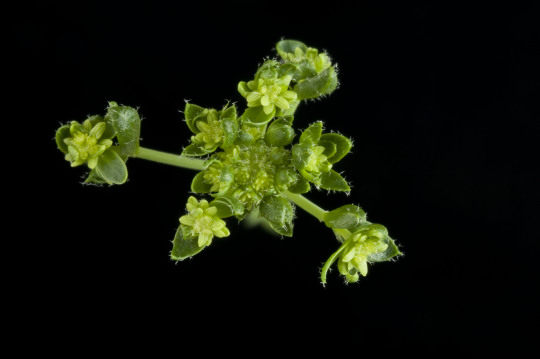
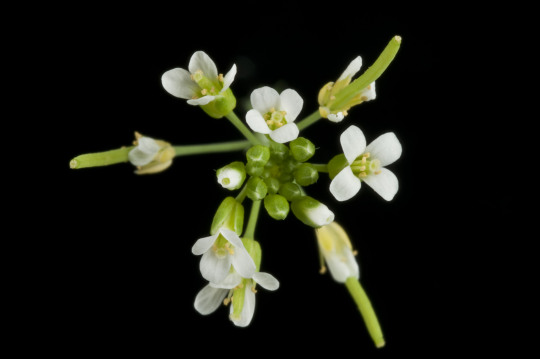
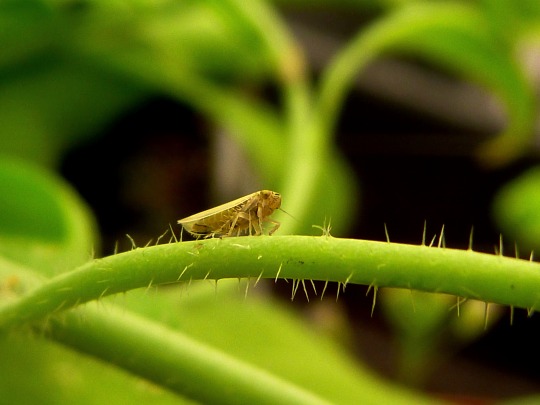
Zombie plants
Scientists have discovered how a bacterial parasite turns plants into the living dead.
The bacteria is able to manipulate the way plants grow, causing infected plants to transform their flowers into leaf tissue.
In doing so, the plants are sacrificing their reproductive success and becoming sterile – dead to the future and destined to only benefit the survival of the bacteria parasite (healthy plant seen in the top image and an infected plant can be seen in the middle image).
The parasitic bacterium produces a protein that tricks the plant into transforming its flowers into leaf-like material. This transformation makes the plant more attractive to leafhoppers for settlement - the bacterium’s next victim and host to be (see leafhopper in bottom image).
Once an enticed leafhopper eats the infected zombie plant, the bacteria then catches a ride in their saliva on to the next plant they hop on to – starting the cycle all over again.
This research comes from the labs of Professor Hogenhout at John Innes Centre, and Professors Angenent and Immink at Wageningen University.
Images: John Innes Centre
Read more spooky science.
457 notes
·
View notes
Link
113 notes
·
View notes
Photo

La storia del carattere tipografico inventato nel Cinquecento che col passare del tempo è diventato lo standard dell'editoria
Perché tutti i libri italiani sono in Garamond - Il Post
0 notes
Photo
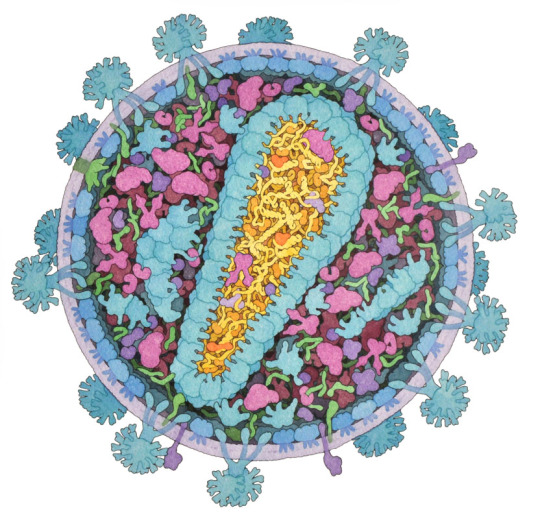
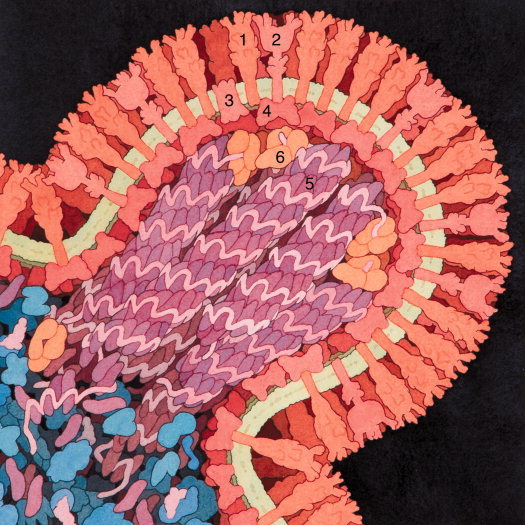
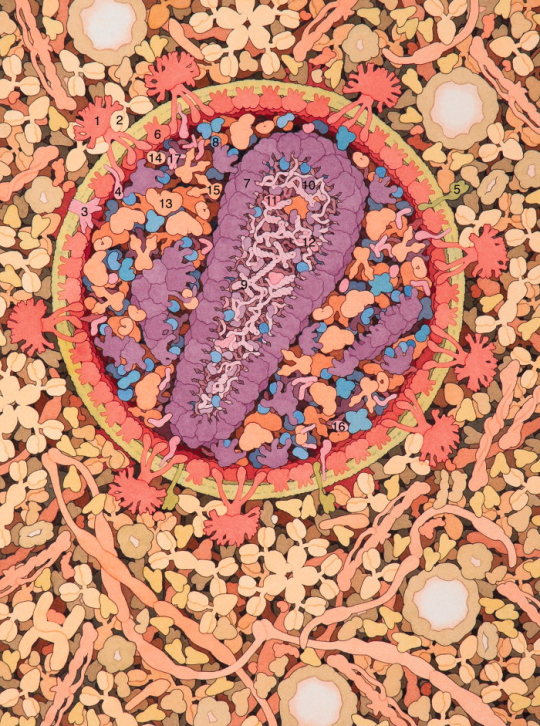
HIV virus particle, budding influenza virus and HIV in blood serum as illustrated by David S. Goodsell.
Goodsell is a professor at the Scripps Research Institute and is widely known for his scientific illustrations of life at a molecular scale. The illustrations are usually based on electron microscopy images and available protein structure data, which makes them more or less accurate. Each month a new illustrated protein structure can be found in Protein Data Bank molecule of the month section and you can read more on how his art is made here.
1K notes
·
View notes
Photo

New Alzheimer’s treatment fully restores memory function
Australian researchers have come up with a non-invasive ultrasound technology that clears the brain of neurotoxic amyloid plaques - structures that are responsible for memory loss and a decline in cognitive function in Alzheimer’s patients.
If a person has Alzheimer’s disease, it’s usually the result of a build-up of two types of lesions - amyloid plaques, and neurofibrillary tangles. Amyloid plaques sit between the neurons and end up as dense clusters of beta-amyloid molecules, a sticky type of protein that clumps together and forms plaques.
The team reports fully restoring the memory function of 75 percent of the mice they tested it on, with zero damage to the surrounding brain tissue. They found that the treated mice displayed improved performance in three memory tasks - a maze, a test to get them to recognize new objects, and one to get them to remember the places they should avoid.
The team says they’re planning on starting trials with higher animal models, such as sheep, and hope to get their human trials underway in 2017. (Source)
5K notes
·
View notes